
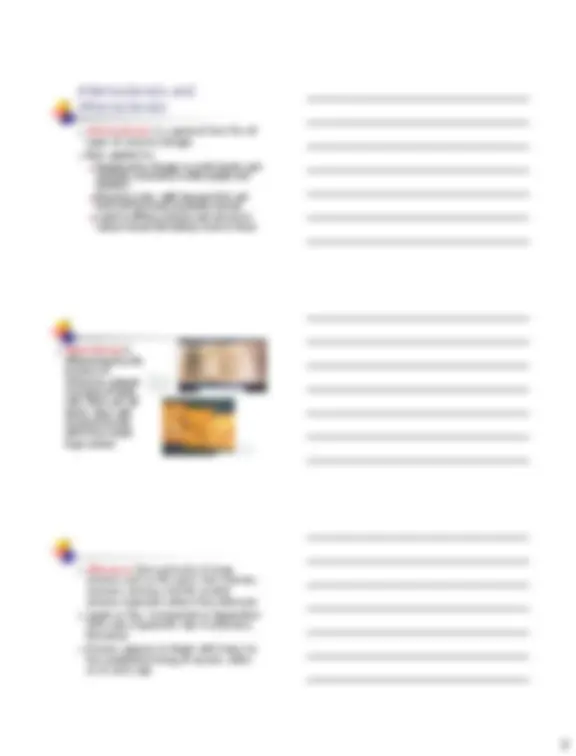
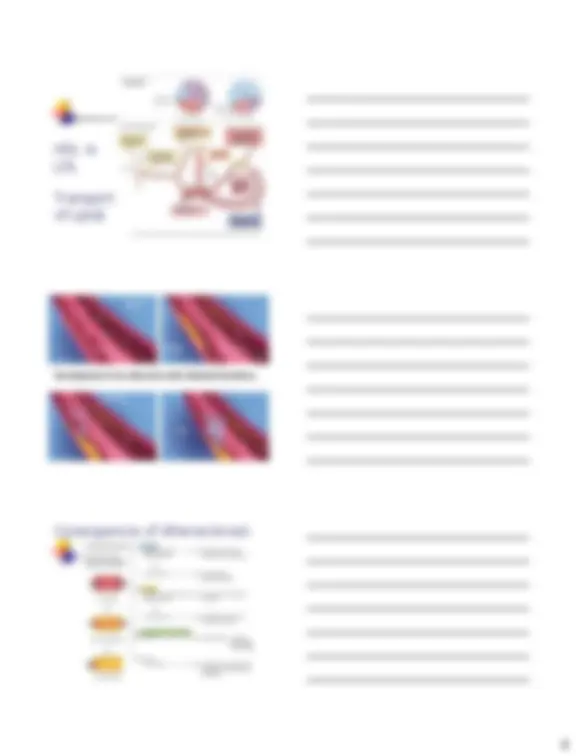
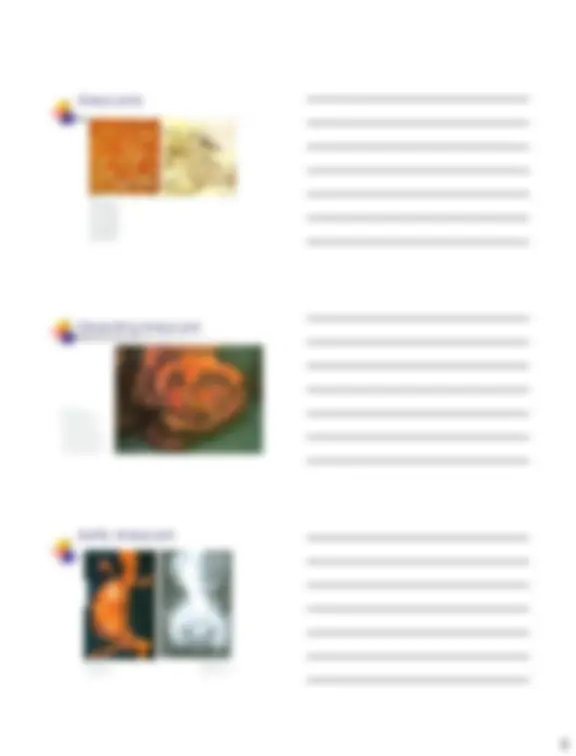
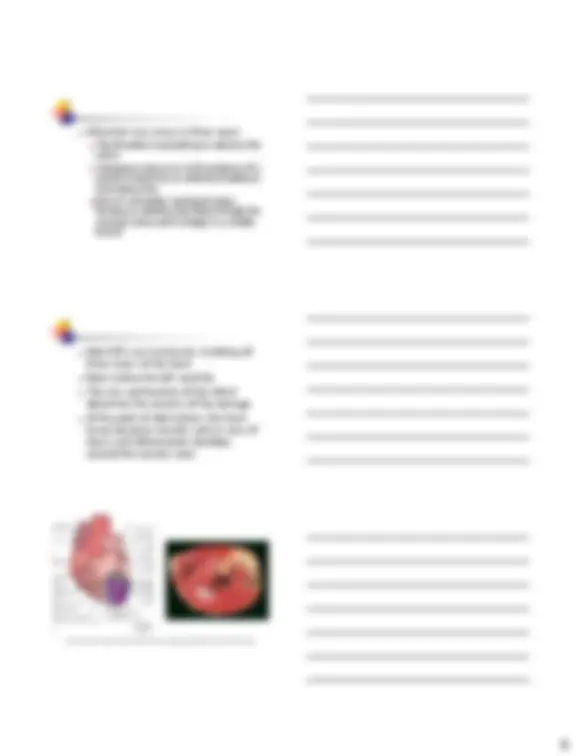
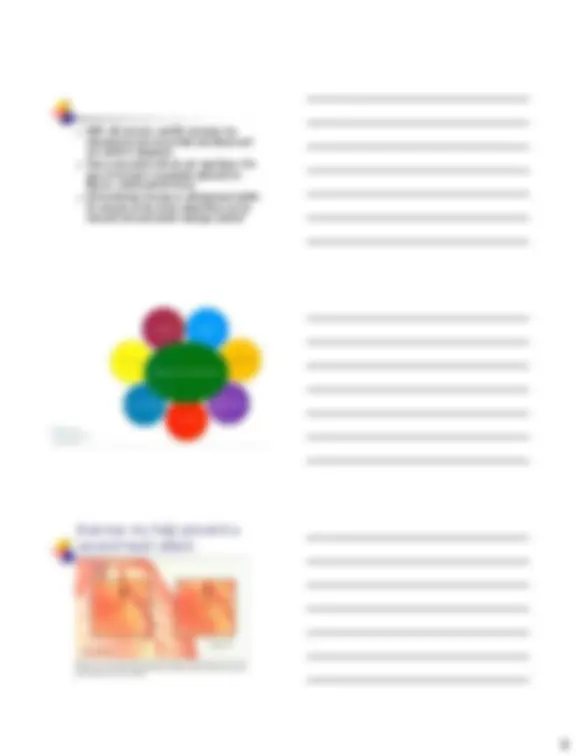
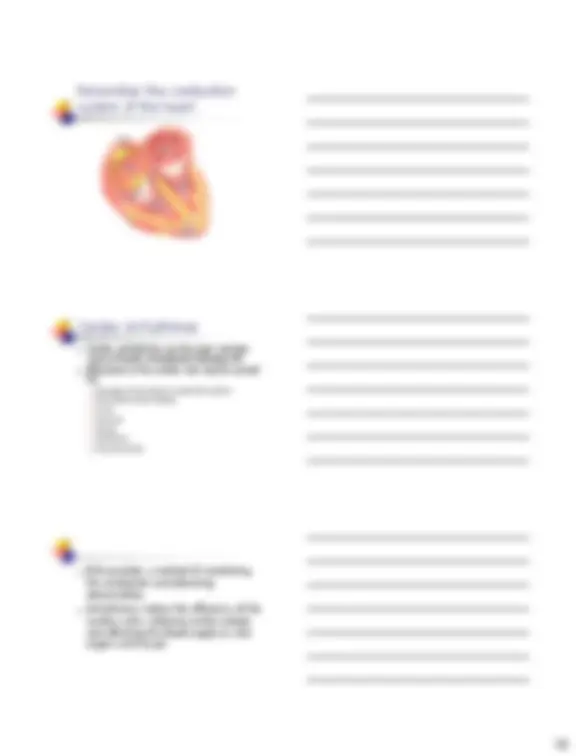
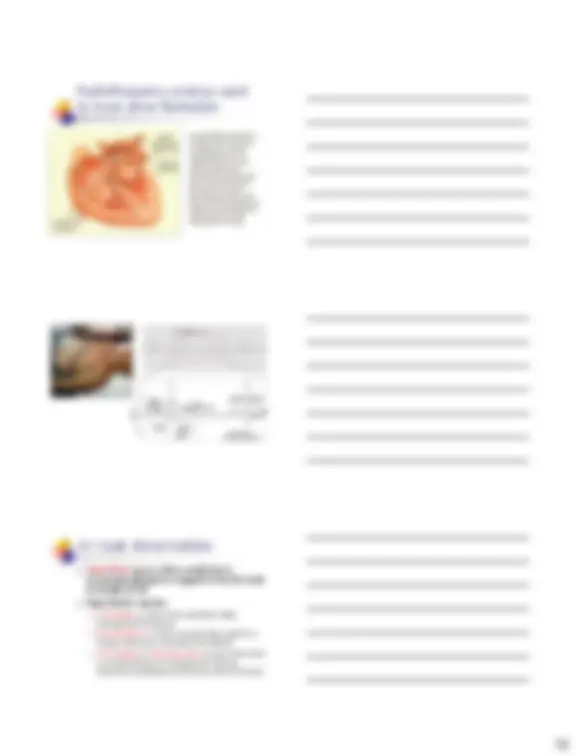
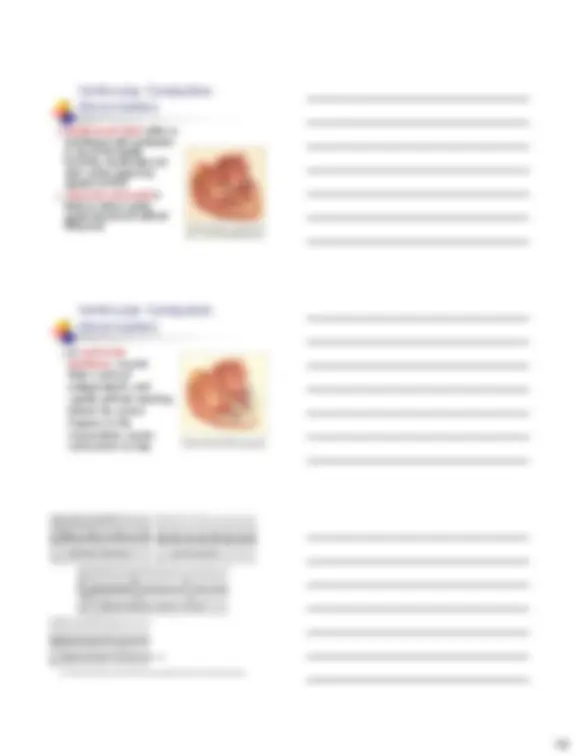
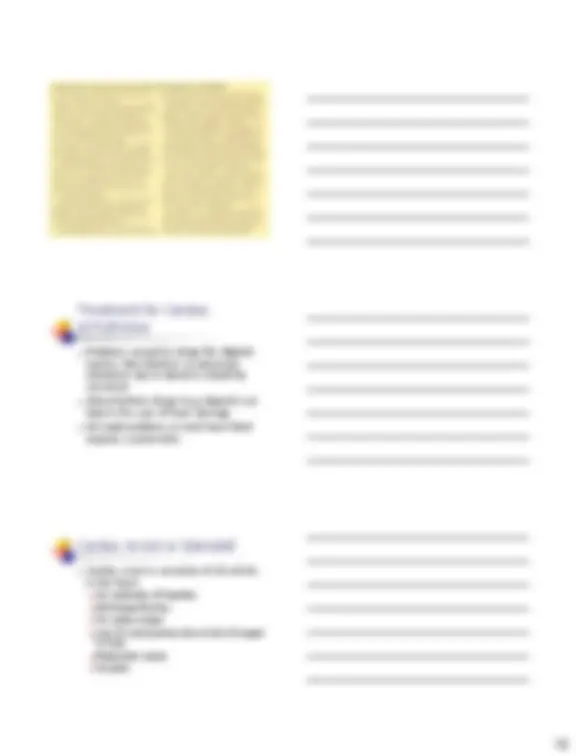
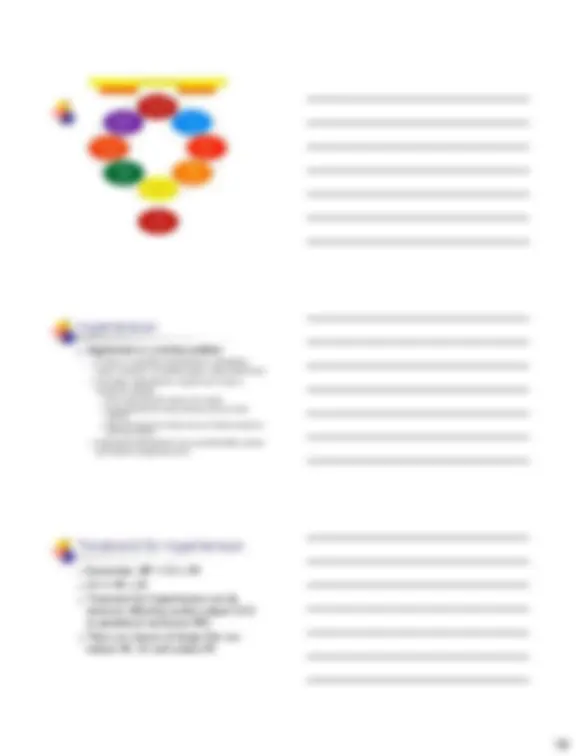
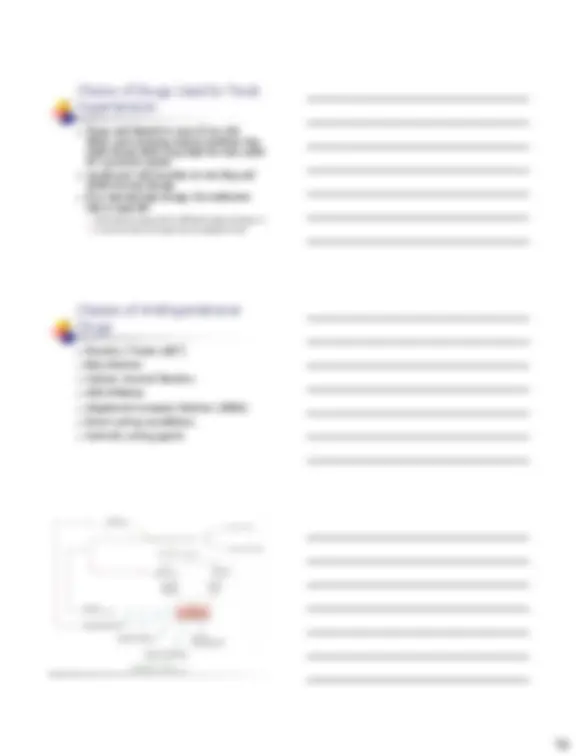
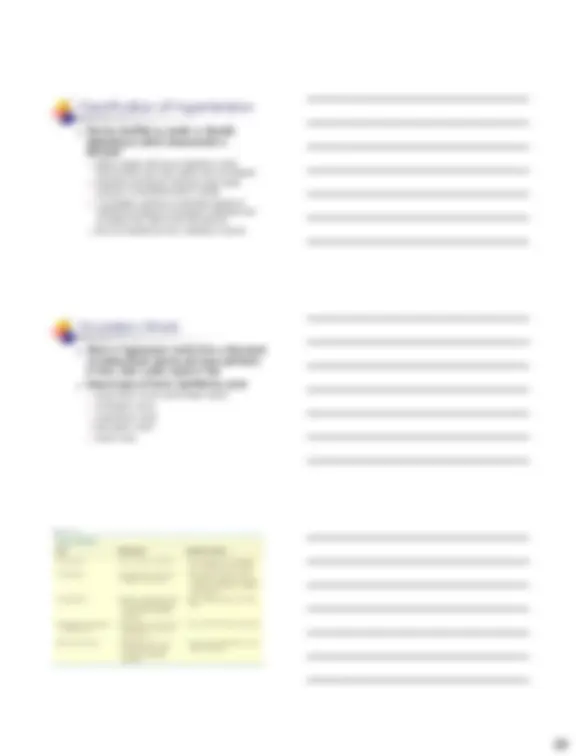
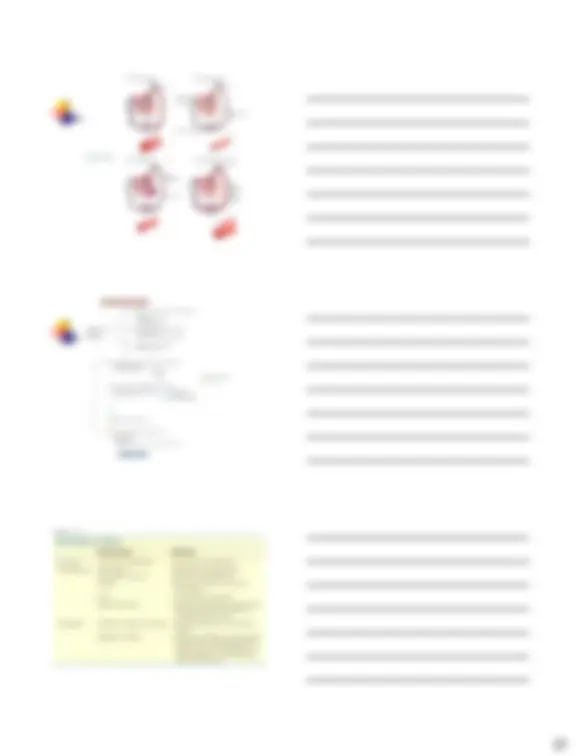
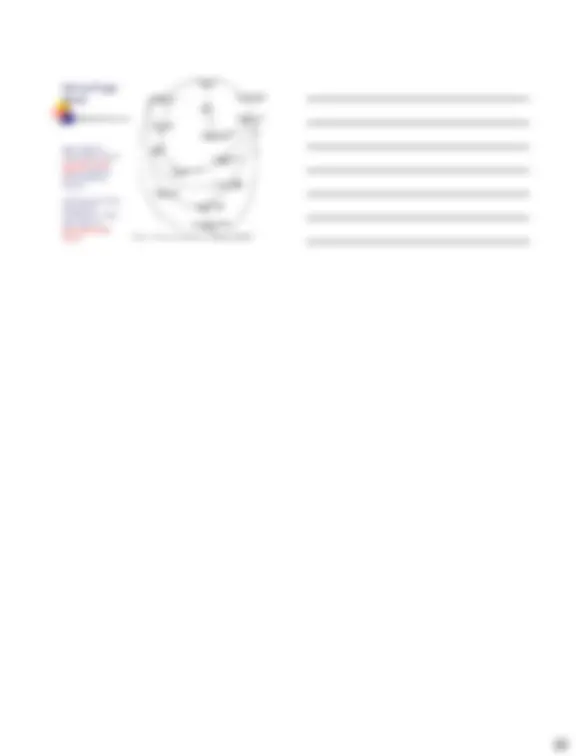


Study with the several resources on Docsity

Earn points by helping other students or get them with a premium plan


Prepare for your exams
Study with the several resources on Docsity

Earn points to download
Earn points by helping other students or get them with a premium plan
Community
Ask the community for help and clear up your study doubts
Discover the best universities in your country according to Docsity users
Free resources
Download our free guides on studying techniques, anxiety management strategies, and thesis advice from Docsity tutors
An overview of various cardiovascular disorders, including heart diseases, diagnostic tests, and arrhythmias. Topics covered include heart diseases such as congenital heart defects, hypertensive heart disease, angina, heart attacks, and cardiac arrhythmias. Diagnostic tests discussed include ecg, chest x-ray films, cardiac catheterization, angiography, doppler studies, and blood tests. Arrhythmias covered include cardiac arrhythmias, sinus node abnormalities, atrial conduction abnormalities, and ventricular conduction abnormalities.
Typology: Study notes
1 / 22

This page cannot be seen from the preview
Don't miss anything!















Congenital heart defects Hypertensive heart disease Angina Heart attacks Cardiac arrhythmias Congestive heart failure
ECG Auscultation Exercise stress tests Chest x-ray films Cardiac catheterization Angiography Doppler studies Blood tests Arterial blood gas determinations
Vasodilators Beta-blockers Calcium channel blockers Digoxin Antihypertensive drugs Angiotensin- converting enzyme inhibitors (ACE- inhibitors) Diuretics Anticoagulants Cholesterol or lipid lowering drugs
CAD includes: Angina pectoris or temporary cardiac ischemia (partial obstruction leading to decreased blood flow) Myocardial infarction or heart attack (total obstruction leading to necrosis) CAD may ultimately lead to: Heart failure Serious arrhythmias Sudden death Basic problem in CAD is insufficient oxygen for the needs of the heart muscle
Development of an atheroma with attached thrombus.
This chest pain occurs when there is a deficit of oxygen for the heart muscle Can occur when: The blood supply (partial occulusion causing ischemia) or oxygen supply (anemia) to the myocardium is impaired When the heart is working harder than usual and needs more oxygen When a combination of these factors is present Anginal pain is usually quickly relieved by rest and administration of vasodilators
A myocardial infarction (MI) or heart attack occurs when a coronary artery is totally obstructed leading to prolonged ischemia and cell death or infarction. MI is characterized by persistent chest pain radiating down the left arm, pallor and rapid, weak pulse. The most common cause is atherosclerosis, usually with thrombus attached Necrosis of cardiac tissue begins to occur after about 20 minutes of hypoxia.
The thrombus may build up to obstruct the artery Vasospasm may occur in the presence of a partial occlusion by an atheroma leading to total obstruction Part of a thrombus may break away, forming an embolus that flows through the coronary artery until it lodges in a smaller branch
Cardiac arrhythmias are the most common cause of death immediately following MI. Alterations in the cardiac rate may be caused by: Damage to the heart’s conduction system Electrolyte abnormalities Fever Hypoxia Stress Infections Drug toxicities
Bradycardia-regular but slow heart rate, less than 60 beats per minute; usually due to vagal (parasympathetic) nerve stimulation Tachycardia-regular but rapid heart rate, 100- 160 bpm due to: Sympathetic stimulation Exercise Fever Stress Decreased blood volume
Premature atrial contractions or beats (PAC/PAB) are ectopic beats of the atria usually caused by a focus of irritable atrial muscle cells outside the conduction pathway Atrial flutter refers to a heart rate of 160 - 350 bpm
Heart block occurs when conduction is excessively delayed or stopped at the AV node or bundle of His Heart blocks may be: First degree, in which the conduction delay prolongs the PR interval Second degree in which a longer delay leads to a missed ventricular contraction periodically Third degree or total heart block occurs when there is no transmission of impulses from atria to ventricles; spontaneous ventricular rate 30-45 bpm
Bundle branch block refers to interference with conduction in one of the bundle branches; usually does not alter cardiac output but appears on ECG Ventricular tachycardia is likely to reduce cardiac output because of reduced filling time
CHF occurs when the heart is unable to pump sufficient blood to meet the metabolic needs of the body CHF usually occurs as a complication secondary to another condition: May present as an acute episode but is usually a chronic condition May result from a problem with the heart, such as an infarct or valve defect May be due to increased demands on the heart, such as in hypertension or lung disease May result from a combination of these factors
An infarct in the left ventricle or essential hypertension (high blood pressure) affects the left ventricle first Pulmonary valve stenosis or pulmonary disease affects the right side first Various compensatory mechanisms maintain cardiac output for a while: Reduced blood flow to the systemic circulation increases renin and aldosterone secretion
The SNS response increases heart rate and peripheral resistance This may decrease efficiency of the heart by impeding filling Increases work load on heart muscle Hearts chambers tend to dilate and cardiac muscle hypertrophies (cardiomegaly) Increases circulatory requirements for the enlarged heart muscle Myocardial cells begin to die; replaced by CT
Cardiac output or stroke volume decreases resulting in less blood reaching tissues Decreased cell function Fatigue Lethargy Mild acidosis develops Venous return to that side of the heart impeded “Backup” congestion develops in the circulation behind the affected ventricle
Drugs used depend on ease of use, side effects and coexisting medical conditions that might dictate which drug might be most useful for a particular patient Usually start with low dose on one drug and slowly increase dosage. If at relatively high dosage, the medication fails to lower BP: Discontinue drug and try different class of drugs, or A second class of drugs may be added to first
May be classified as systolic or diastolic depending on which measurement is elevated: Elderly people with loss of elasticity in their arteries often have high systolic and low diastolic Essential hypertension develops when blood pressure is consistantly above 140/ The diastolic pressure is important because it indicates the degree of peripheral resistance and increased work load on the left ventricle May be classified as mild, moderate or severe
Shock or hypotension results from a decreased circulating blood volume and tissue perfusion; in most cases cardiac output is low Several types of shock classified by cause: Hypovolemic shock (hemorrhagic shock) Cardiogenic shock Anaphylactic shock Neurogenic shock Septic shock